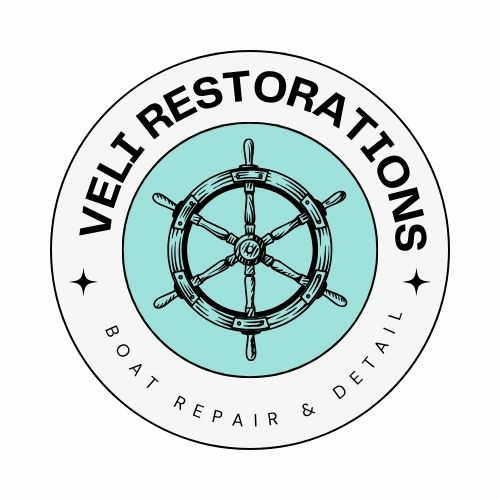We’ve honed our boat detailing process over years and years across Cape Cod, MA until we’ve found the perfect methods at making our clients’ boats showroom-ready.
Here’s what we do:
Exterior Detailing:
- Wash the Hull and Deck:
- Use a boat-specific soap and a soft brush or sponge.
- Rinse thoroughly to remove salt, dirt, and grime.
- Clean Canvas and Upholstery:
- Use a marine-grade cleaner for canvas, vinyl, and upholstery.
- Scrub gently and rinse with water.
- Polish and Wax:
- Apply a marine polish to restore shine and remove oxidation.
- Follow up with a wax to protect against UV rays and water.
- Clean and Polish Metal:
- Use a metal cleaner to shine stainless steel fittings and rails.
- Clean Windows and Hatches:
- Use a specific cleaner for marine glass or plexiglass.
- Polish with a microfiber cloth for streak-free shine.
- Detail the Engine and Lower Unit:
- Clean the engine compartment and lower unit.
- Use appropriate cleaners and degreasers for engine components.
- Inspect and Treat Non-skid Surfaces:
- Clean non-skid surfaces with a non-skid cleaner.
- Apply a protective treatment to maintain grip and prevent stains.
Interior Detailing:
- Vacuum and Clean Carpets and Flooring:
- Vacuum thoroughly to remove dirt and debris.
- Use a carpet cleaner for carpets or a gentle cleaner for other types of flooring.
- Clean Interior Surfaces:
- Wipe down all interior surfaces (wood, fiberglass, plastic) with a boat-specific cleaner.
- Pay attention to corners and hard-to-reach areas.
- Condition and Protect Interior Surfaces:
- Apply a UV protectant to prevent sun damage to interior surfaces.
- Use a conditioner on leather seats or upholstery.
- Clean and Condition Wood Surfaces:
- Use a wood cleaner followed by a wood polish or conditioner.
- Clean and Organize Storage Areas:
- Remove items from storage compartments.
- Clean these areas and organize items neatly.
- Check and Clean Electrical Components:
- Ensure all electrical components are clean and functioning.
- Use electrical contact cleaner if needed.
Final Touches:
- Inspect for Touch-Ups:
- Check for any areas needing paint touch-ups or repairs.
- Apply a UV Protectant to Rubber and Vinyl:
- Use a UV protectant on rubber seals and vinyl trim to prevent cracking.
- Check Safety Equipment:
- Ensure all safety equipment is in good condition and properly stored.
- Apply Marine Grade Protectants:
- Use a marine-grade protectant on all surfaces for long-lasting protection.
Detailing a boat requires attention to detail and the use of products specifically formulated for marine environments to ensure the best results and longevity of your boat’s appearance and performance.

